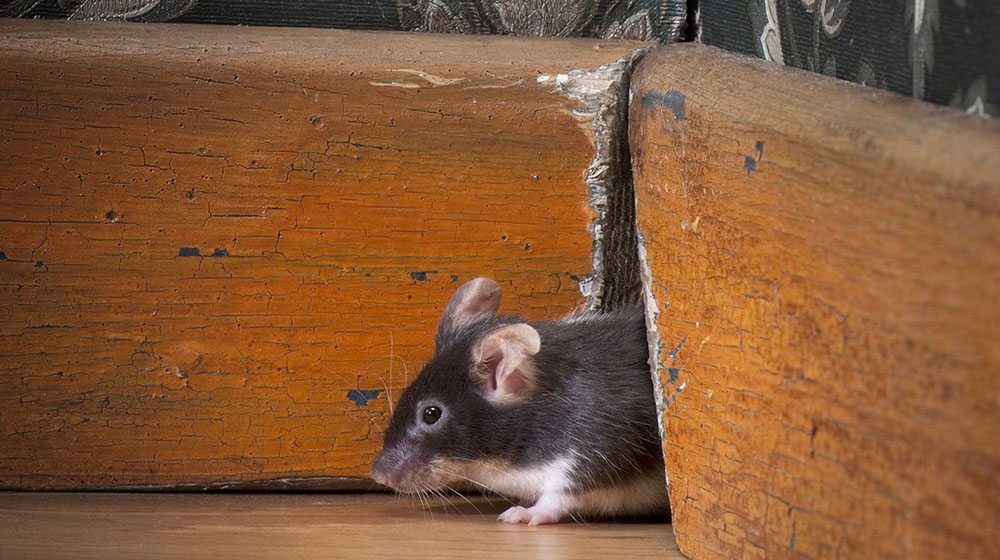4 Ways to Prevent Mice from Entering Your Home
Table Of Content

It’s difficult and time-consuming work, but it’s also easier and cheaper than other pest removal problems. The exact cost will depend on the severity of the infestation, the specific pest removal company you hire, and your location. With almost a decade of experience in the pest control industry, Joe is an expert in delivering effective pest and nuisance wildlife management solutions for homes and businesses. At Catseye, we have the knowledge, skills, and equipment to effectively handle any mice problems you might have. Combining our Mice and Rodent Control program and Cat-Guard Exclusion Systems, we ensure that any rodents in your home are removed, and your home is permanently sealed. Slanted basement doors on the outside of some houses allow for easy access and gaps between the two doors are often large enough for mice to sneak through.
You might have mice in your home without knowing it. Here's how to outsmart them - IOL
You might have mice in your home without knowing it. Here's how to outsmart them.
Posted: Tue, 18 Jul 2023 07:00:00 GMT [source]
Building Materials
They’ll also burrow into furniture to create their nests and can invade crawl spaces to form nests in your insulation. Mice have been known to settle in electrical appliances, causing appliances to short-circuit. When rodents are accessing the inside of your space, it is important to find where they are entering and seal those spaces up. Spray foam may fill the space but mice and rats can easily chew through it for re-entry.
Strategies to Find & Seal Mice Entry Points
Canada strictly prohibits methods that create unnecessary pain and fear for pest control. The mouse becomes stuck to the glue trap and may opt to chew off limbs to escape. Mice are small enough to squeeze through gaps and holes that are just the size of a dime. They take advantage of any cracks on the wall or near windows.
These windpipe cells trigger coughs to keep water out of the lungs
Leaving your windows open at night is a huge entry point for mice, and they will take advantage. That’s why you want to get these rodents out of your home—and keep them away. No one likes spotting spiders or stink bugs in their home, but mice? They’re an entirely different pest that can cause a whole host of problems. A single female mouse can produce up to eight litters per year, each containing 4-7 pups.
There’s not a set number of mice in a house that’s considered an infestation. If you have just one or two mice in your home, they could breed quickly and produce dozens of mice. Address the problem as soon as you notice it so you don’t have to deal with a full-blown infestation. Make sure they can't get into the walls in the first place by carefully inspecting any entry points.
STEP 12: Consider a humane approach.
If you are dealing with a rodent issue or cleaning up a space with previous rodent activity, wear gloves and an approved mask or respirator to protect yourself. So if mice are not caught within the first days of trap placement, the trap (or mouse bait) should be moved. Peanut butter is a more effective bait than cheese at luring out mice. However, mice are attracted to a wide variety of foods, Remember to replace the bait every couple of days to keep it from getting too hard or stale.
This information will be invaluable in getting pesky rodents out of your home. Brick and mortar fireplaces also pose a problem for homeowners looking for a mouse-free house. The rough texture of the bricks can give mice enough of a grip to crawl up and down the chimney. Just like doors, windows can sit slightly crooked in the frame, giving mice a way inside. The space around the wiring may look small, but mice can fit through the smallest of spaces – ¼ inch! Vents help release air to the outside and keep air moving inside the house.
Clever Ways Mice Use Garage Clutter For Shelter
Mice infestations can be hard to root out, so you may eventually want to talk to a pest control professional. These companies will know how to extract the mice from your walls while doing the least amount of damage to your home. They can also help you prevent new infestations by finding and securing possible entry points. If you are evaluating pest control companies, we recommend getting quotes from Terminix and Orkin. We’ll take a look at some frequently asked questions about mouse problems in the home and also cover ways to get mice out of your walls and prevent them from coming back.

Mice can also slip into attics through gaps where the roof meets the walls. In some cases, mice may even be able to squeeze through gaps in windows and doorways that are not completely airtight. While it may seem simple enough, there is an effective way of placing mouse traps around the home. Lay the traps anywhere you see mice or signs such as rodent droppings or "rubbings" on baseboards and walls. Place the traps perpendicular to the walls, with the trigger section facing the baseboard. This will cause the mouse to run directly into the bait as it scurries along the walls, instead of running over the trap.
If that’s the case, you’ll likely see the mouse during the day in heavily trafficked areas of your home. More often than not, if you see a mouse, it’s just one of many. If you saw the mouse at night, especially in places like the attic or a closet, you almost certainly have more than one. Exactly how many there is nearly impossible to determine, but you’ll want to take steps to remove them immediately. House mice have pointed snouts, hairless tails, and large, rounded ears.
Fortunately, mice will avoid large amounts of water when possible and will only take this route if there’s no other option. I grew up in an area of Upstate, NY where dealing with wildlife pests is a common occurrence. When I’m not out roaming around 50+ acres of pastures, woods, and a freshwater bass pond, I’m at my computer writing on Pest Pointers. Be sure to use metal or concrete to block all your openings so that mice cannot chew through the sealant.
Just make sure you proceed with caution, regardless of whether you're tackling this process yourself or hiring an exterminator. Warberg Block recommends following the Centers for Disease Control and Prevention's (CDC) guides to properly exterminate on your own and clean up after the infestation. "If you do choose to use a trap, I advise using a humane live trap," she adds. Notice any gaps on your outer walls or holes beneath your deck? Mice have outstanding sensory abilities, particularly smell and temperature sensing. This means they can easily detect any openings where warm indoor air is flowing outside.
Once they’re in, mice can find spaces in the walls or rafters to build a nest. Remember, mice need to gnaw every day to file down their long, constantly growing front teeth. If you already have a mouse infestation, the above measures will only go so far.
By far the most humane way to get rid of mice is to use non-lethal, catch and release traps. These traps safely and effectively catch the mice and allow you to take them somewhere far from your home where you can safely release them. If the infestation is really serious and you have to kill the mice, traditional mousetraps kill them very quickly and they don’t suffer. Both rats and mice can cause structural damage to your home. Mice chew on almost anything they can use to build nests, including wood, cloth, books, insulation, and furniture.
Comments
Post a Comment